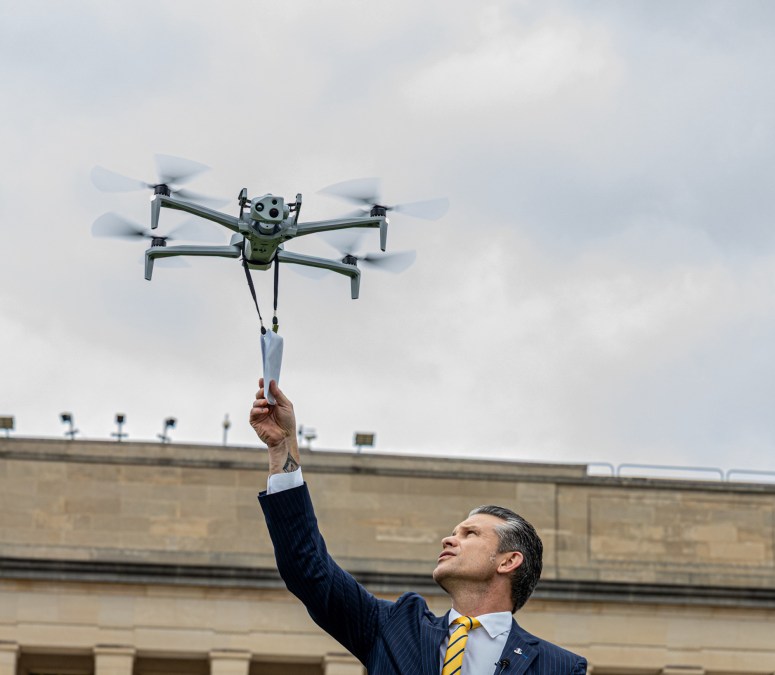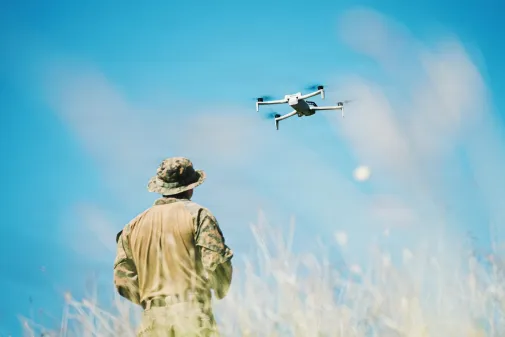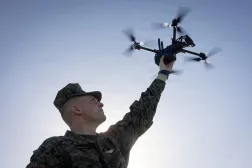Hegseth directive on ‘unleashing U.S. military drone dominance’ includes deadlines for major overhauls

Secretary of Defense Pete Hegseth issued a new directive Thursday aimed at shaking up the Pentagon’s procurement system and quickly ramping up its arsenal of unmanned aerial systems.
The memo “Unleashing U.S. Military Drone Dominance,” addressed to senior Pentagon leadership, combatant commanders and directors of defense agencies, referred to uncrewed systems as “the biggest battlefield innovation in a generation.”
“Our adversaries collectively produce millions of cheap drones each year. While global military drone production skyrocketed over the last three years, the previous administration deployed red tape. U.S. units are not outfitted with the lethal small drones the modern battlefield requires,” Hegseth wrote.
The directive calls for approving “hundreds” of American products for purchase by the U.S. military, arming combat units with a variety of “low-cost drones made by America’s world-leading engineers and AI experts,” and more widely integrating UAS into training exercises.
Here are some key deadlines that the SecDef laid out for Pentagon leaders:
- No later than Sept. 1, the Army, Navy, Marine Corps and Air Force must establish “deliberately screened, active-duty experimental formations purpose-built to enable rapid scaling of small UAS across the Joint Force by 2026, prioritizing initial fielding to U.S. lndo-Pacific Command units,” per the memo. “Within 30 days, the Office of Strategic Capital and Department of Government Efficiency will present options, including advance purchase commitments, direct loans, or other incentives … that accelerate the growth of the U.S. industrial base to outfit our combat units with cheap and effective U.S.-made UAS. To maximize these investments, each Military Service will establish, resource, and empower unsubordinated program offices solely focused on UAS, with an immediate priority towards small UAS. These program offices will compete to determine best practices in rapid acquisition and industry engagement with operational units. Drone dominance is a process race as much as a technological race. Major purchases shall favor U.S. companies, informed by Blue List ratings and strategic guidance.”
- By Jan. 1, 2026, responsibility for publication and maintenance of the Blue List of DOD-approved unmanned aerial systems, components and software will be transferred from the Defense Innovation Unit (DIU) to the Defense Contract Management Agency. “The Blue List will become a digital platform that will continuously update an aggregate list of all certified U AS parts and systems, those with follow-up requirements, the latest user ratings, and all vendors approved to certify UAS parts and systems for the Blue List. The DCMA and the DIU will inform and align vendors on evolving Blue List expectations and develop a ratings system to identify best-in-class systems across the Joint Force. The Blue List will be dynamic, retaining all previous component and supply chain findings, and including updated performance evaluations from testing and key lessons learned from training. The Blue List will be searchable using artificial intelligence tools,” according to the memo.
- Within 60 days, the secretaries of the military department have been tasked to identify programs that would be more cost-effective or “lethal” if replaced by drones.
- Within 90 days, the secretaries of the military departments, in consultation with the Pentagon’s research and engineering directorate, have to jointly designate “at least three national ranges, with diverse terrain (including at least one with over-water areas) for deep UAS training, with low/no inter-service cost transfer,” per the memo, which noted that units operating UAS will “access DoD grounds with abundant airspace and spectrum allocation.”
- Next year, Hegseth said he expects to see UAS capabilities integrated into “all relevant combat training, including force-on-force drone wars.” And by 2027, all major training events across the Department must integrate drones.
- By the end of 2026, “every squad” is to be equipped with “low-cost, expendable drones,” with priority going to Indo-Pacific combat units.
“Our adversaries have a head start in small UAS, but we will perform a technological leapfrog and establish small UAS domain dominance by the end of 2027. We will accomplish this urgent goal by combining the Nation’s best qualities, including risk-taking. Senior officers must set the tone. Accelerating this critical battlefield technology requires a Department of War culture,” Hegseth wrote.






